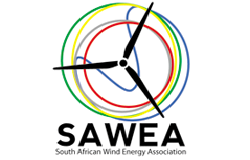Wind energy is playing a big role in powering South Africa and its looks like that role will become even bigger in the coming years. Currently the country’s wind energy sector has surpassed 1 GW and has another 3 GW worth of projects in the pipeline.
Johan van den Berg, CEO at the South African Wind Energy Association (SAWEA) is enthusiastic about the 1 GW milestone and promises there is much more to come. “Wind energy is still a relatively new industry in South Africa and what we have achieved in such a short time is a sure indication of how much more we can do. In 2011 there were just 10 turbines in the country – now we have 13 large wind farms in operation, consisting of over 495 turbines, with many more under construction. More than 3 GW of wind energy has already been allocated through the Government’s Renewable Energy Independent Power Producer’s Program (REIPPPP) – and more is due to be announced shortly.”
Not only is the sector providing much needed power, it is also aiding in the development of local communities. The country’s REIPPPP criteria ensures that developers of renewable energy projects allocate funds to the sustainable development of nearby communities. So far ZAR 91.1 billion has been committed to development initiatives through the program. This number will increase as more projects are procured, with dates and allocations for bid Window 5 due to be announced by the government imminently.
This year’s theme for SAWEA’s annual conference ‘Windaba’ is ‘Towards 100% Renewables’ and van den Berg believes this is a realistic 2050 ambition: “In South Africa we have the abundant natural resources – sun and wind – for renewables to thrive, wind power is now about 40% cheaper than new coal power produced by Eskom. The extraordinary growth in procured capacity from 10 MW to 3300 MW has taken place in just four years. The rapid increase in Government’s renewables ambitions reflects not just the proven success of the programme but the economic reality that wind has become a no-brainer. It is four to six times quicker to construct than conventional energy and infinitely safer. It’s modular and can better use existing grid capacity. It’s all built with private money and saves Government billions for the new build program.”

